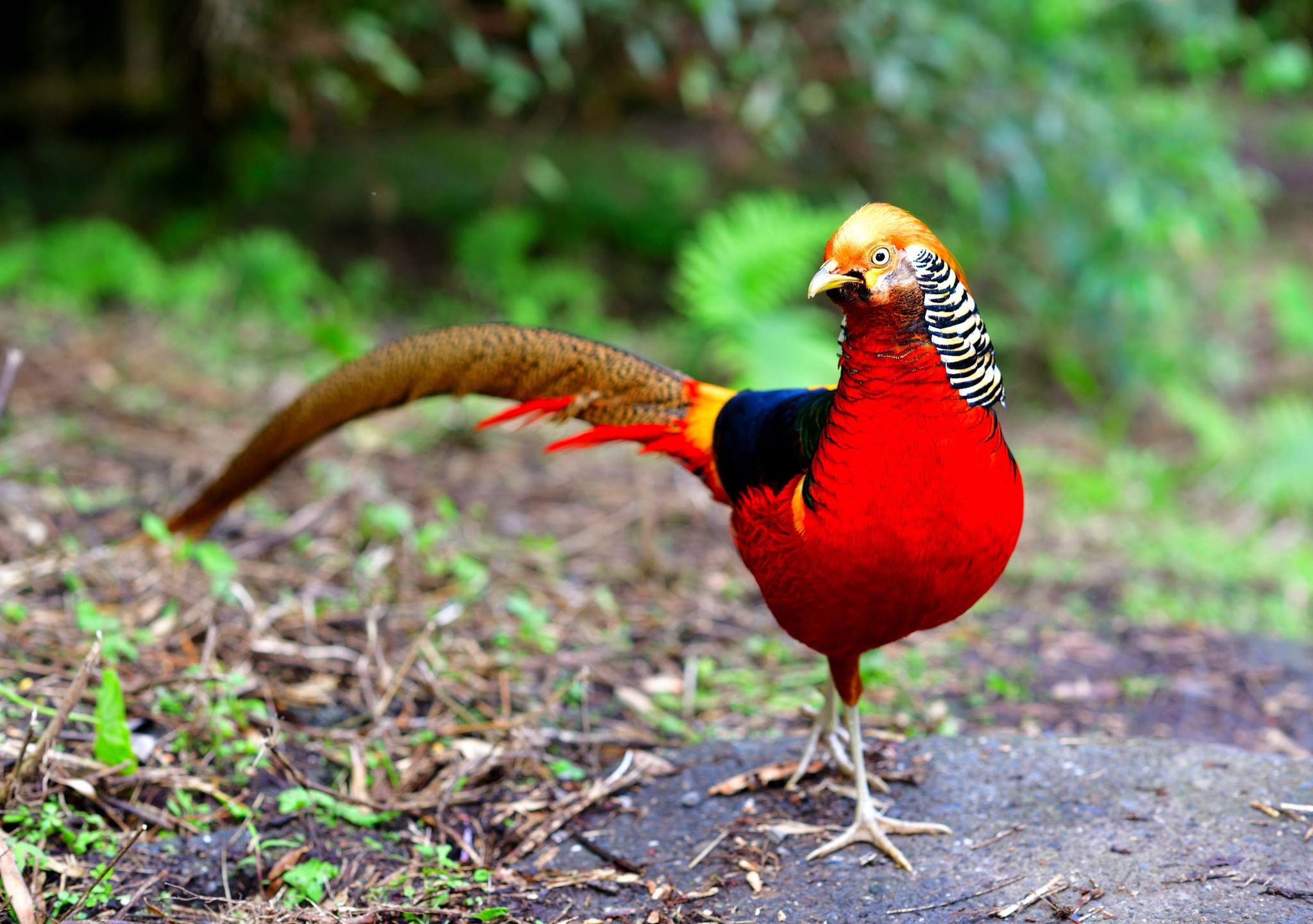The golden pheasant (Chrysolophus pictus) is a striking bird native to the dense forests and mountainous regions of western China. Known for its vibrant plumage, the male golden pheasant sports a dazzling combination of red, gold, and green feathers, along with a striking orange “cape” that it can fan out during courtship displays. The females, while less flamboyant, possess a more subdued brown and black feather pattern that provides excellent camouflage in their natural habitat. These birds are ground dwellers and prefer to forage for food such as grains, leaves, and invertebrates.

Beyond its native range, the golden pheasant has established feral populations in several countries, including England, Canada, the USA, Mexico, Colombia, Peru, and Bolivia. These populations are often found in areas that mimic their native habitat, such as dense woodlands and forests. In England, for example, the golden pheasant has thrived in various estates and parklands, where its bright plumage can occasionally be spotted by keen birdwatchers. Their ability to adapt to new environments has contributed to their success in these non-native regions.






The golden pheasant’s presence in these diverse countries has sparked interest among ornithologists and bird enthusiasts alike. In many areas, they are a popular species for aviculture, valued for their beauty and relatively easy care. However, their introduction into non-native habitats has also raised ecological concerns, as with any introduced species, the potential impact on local ecosystems must be carefully monitored. Despite these concerns, the golden pheasant remаins a beloved and admired bird, celebrated for its stunning appearance and intriguing behaviors.